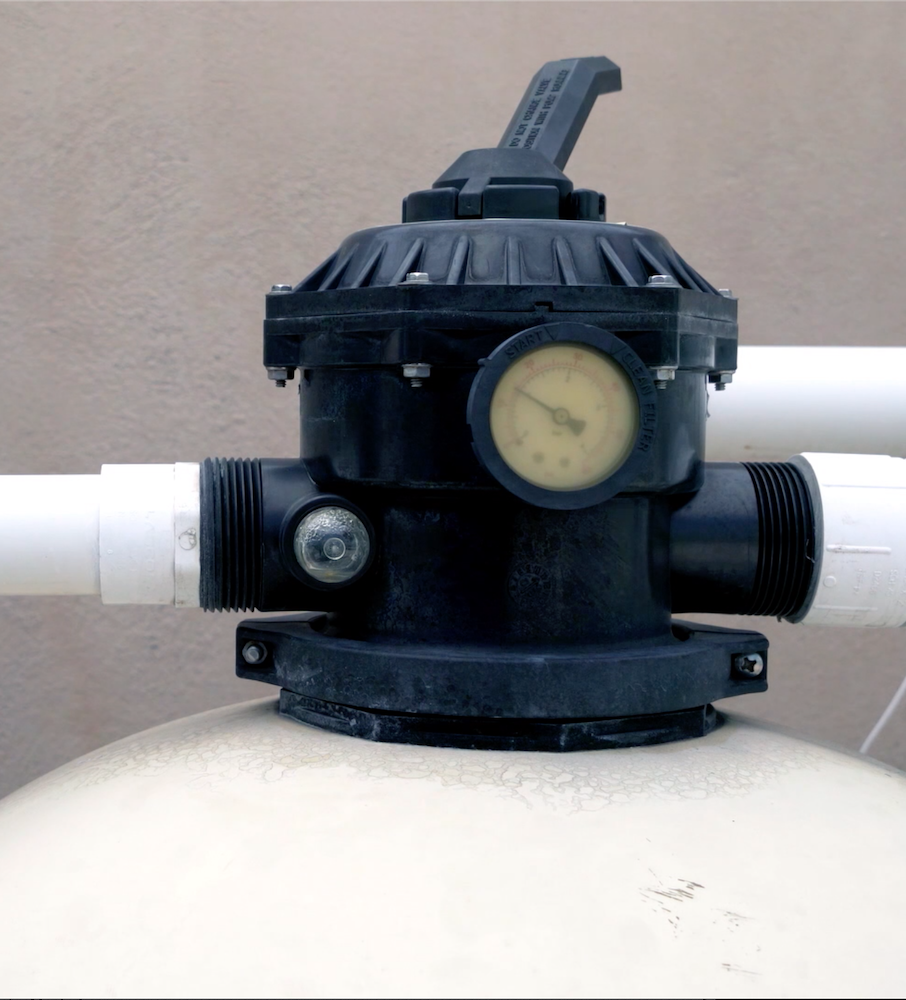During the dog days of summer, your pool is the perfect place for you and your pooch to cool off. While it is generally safe for your dog to take a dip in your pool, there are a few safety and pool care precautions you should take.
Is Pool Chlorine Safe for Dogs?
As long as it’s ok for humans to swim, it’s ok for dogs. However, just like in humans, high levels of chlorine can cause your pooch skin or eye irritation. Also, while it’s safe for dogs to swallow some pool water, it’s not a good idea for them to drink it in excess. Be sure to have plenty of fresh water on hand for tired and thirsty pups. When you and your dog are done swimming, it’s a good idea to rinse them off and take extra care to dry their earsg. Remember, infections are caused by wet ears, not chlorine, so make sure to properly dry their ears after swimming.
How Does my Dog Affect my Pool Chemistry and Equipment?
Most pool surfaces are safe for your dog to swim, with the exception of those that are vinyl-lined. If your pool is vinyl, be wary of punctures from your pup's nails.
In most cases, as long as your pool filter is properly rated and sized for your pool, your pool filter will be fine, too. Though your filter should be able to handle some extra hair, you'll want to spend additional time maintaining your filtration system if you have many dogs in your pool. To help it out, brush your dog before swimming to help release loose hair and use a skimmer sock, which collects the hair before it reaches the filter. As long as you check the filter pressure and vacuum your pool weekly, your dog enjoying some leisure time in the swimming pool should not create any problems for your equipment.
After swimming, you can add a product like Natural Pool Enzyme to get rid of any organic contaminants. Also, be sure to check your water chemistry often to ensure your chlorine and pH levels are in their ideal ranges. Your local Pinch A Penny offers free water tests to check these levels and more!
Swimways Spring Float Paddle Paws
What are the Best Dog Pool Floats?
If your dog gets tired after swimming or just wants to relax, why not get them their own float! Pool floats for dogs, like this one modeled by our friend Jackson the Dalmatian, are made especially for pets and are more durable than regular pool floats. This means you and your pup can both relax in style without worrying about those little toe beans slipping through puncture holes from their nails.
What are some safety tips for swimming with dogs?
Some dogs are natural swimmers, but others do not like water at all. It’s important not to force your dog into the pool if they don’t want to swim. Some breeds, like those with short legs, are not swimmers. If you really want them to be in the water, there are plenty of options for life vests to be sure they are able to stay above water.
Even if your dog is an experienced swimmer, it’s a good back-up in case they get too tired to hold themselves up. This can happen to dogs of any age and size. It’s also wise to invest in some swim lessons. This will give you and your pet confidence in the pool. Constant supervision is always the best bet for safety. This is especially important when dogs and kids are involved because they can knock each other down or into the water.
Keep an eye out for signs of fatigue or anxiety in your dog. Additionally, make sure that your dog knows where the steps are and that they are clearly marked with a plant or other large object. Teach them to find the steps so they can get out on their own. If you don’t want pets in the pool when you are not there to supervise, a safety fence is a good option to create an entry barrier. Lastly, keep dogs away from stored chemical containers to prevent accidental ingestion. The best place to keep chemicals is on a high shelf or in a locked area.
Now that you're prepared to take care of your pool and your pooch this summer, it's time to get to the fun part! Grab a ball and get ready to have a ball playing a game of splash fetch! If you follow these pool tips, there’s no reason you and your dog can’t enjoy a refreshing dip on a hot summer day!
Need help finding floats for you and your dog?
*Doggo not included with float purchase. Tippy taps sold separately.
Share This Post

